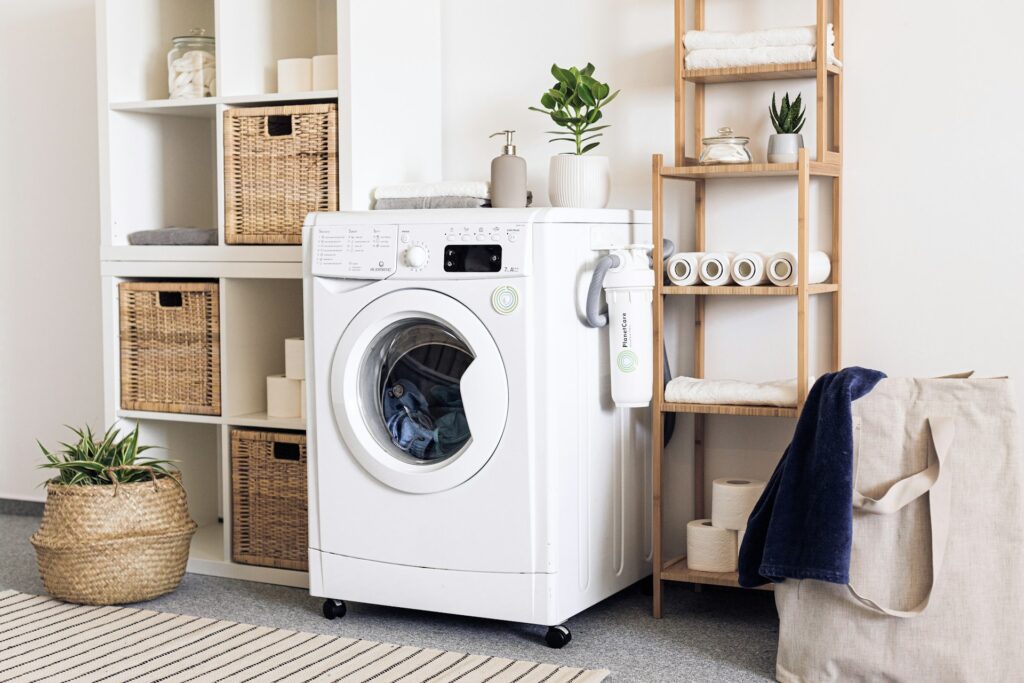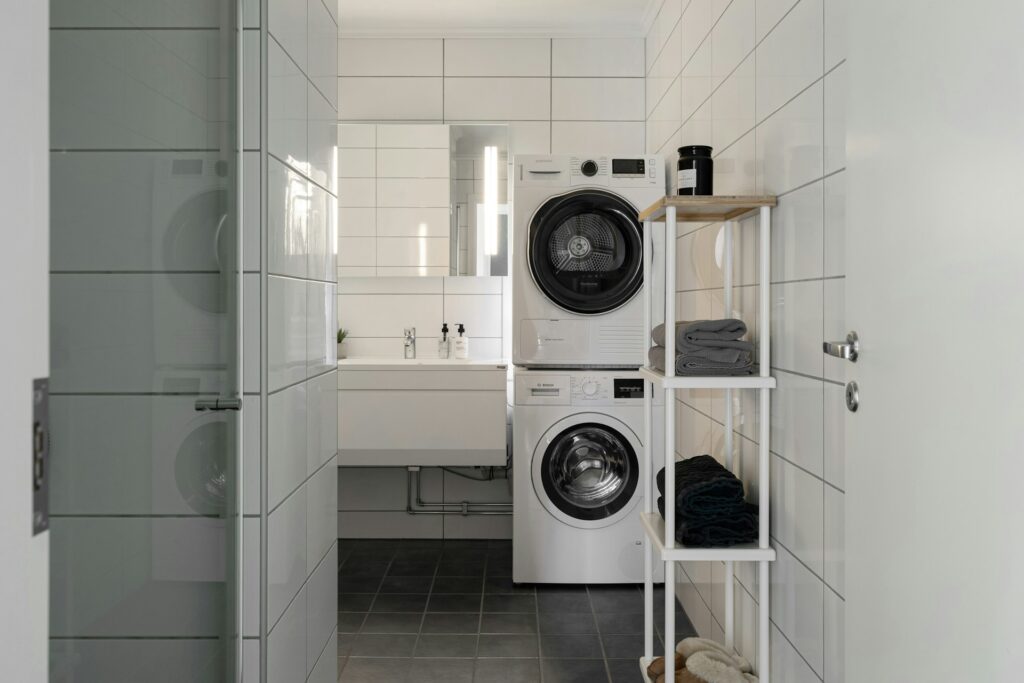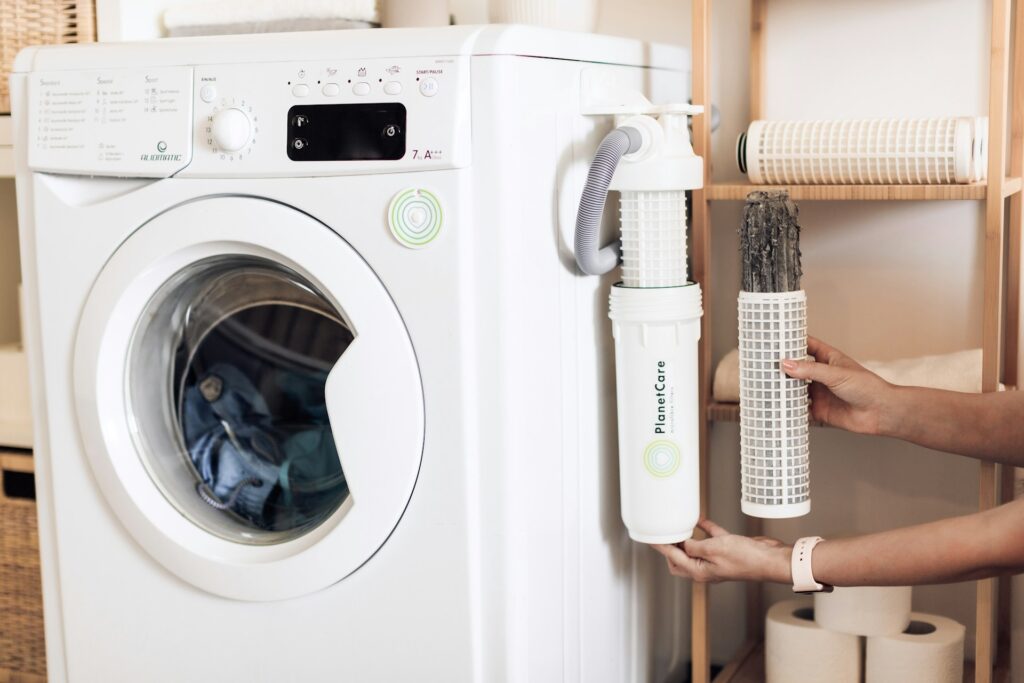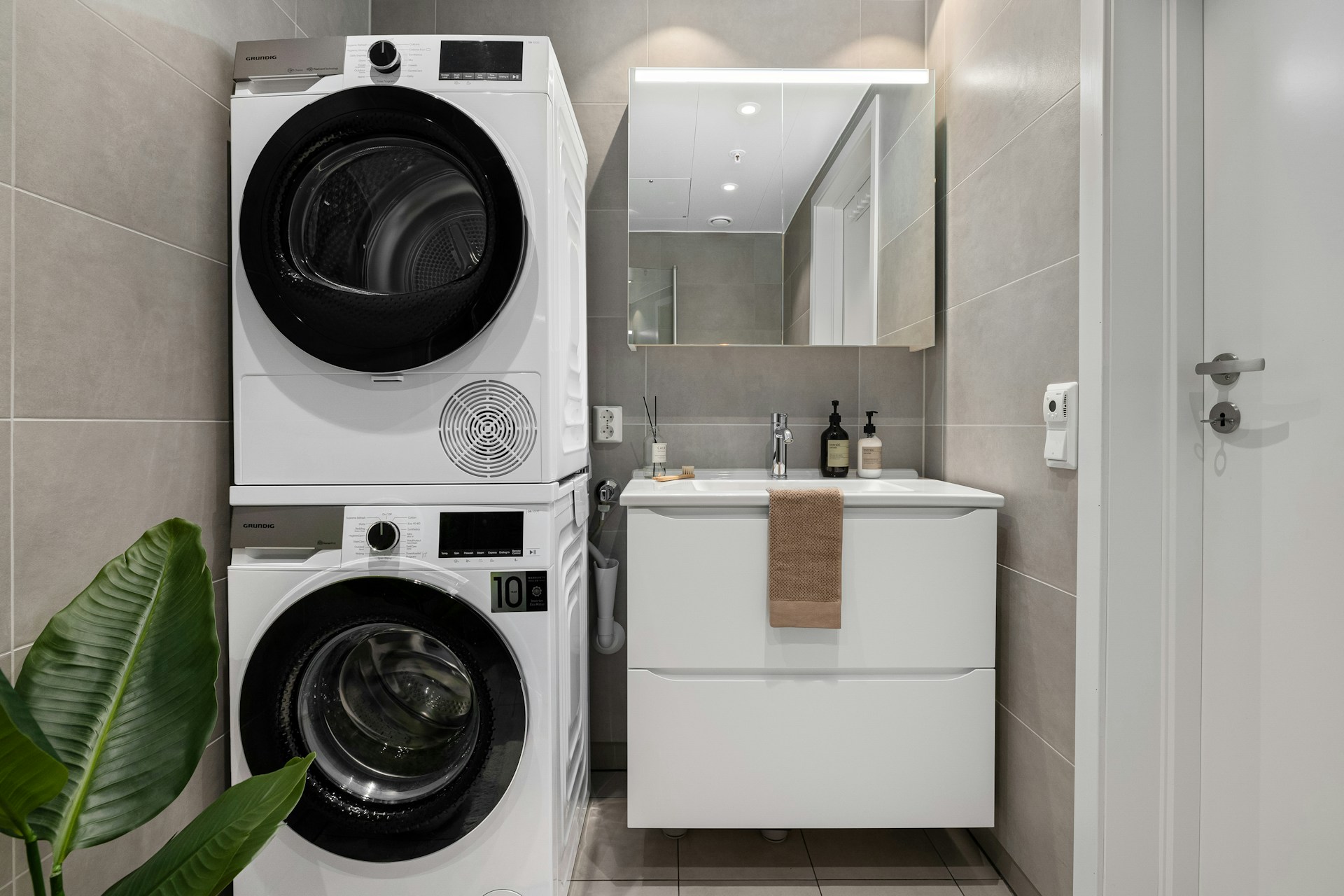Hello everyone, this is DIY Renova.
Gas dryers, especially Rinnai's "Kimita-kun," have been a very popular equipment in recent years. It is a hot topic in the DIY renovation world as it is very useful during the rainy season and winter seasons when laundry is difficult to dry out. However, there are some important things you need to know beforehand when implementing.
In this article, we will explain in detail the points to consider and decide before installing the gas dryer "Kimita-kun" in a way that is easy for beginners to understand.
So, here you go.

Check for gas pipes
First, you need to check whether there is a "gas pipe" in the location where the dryer is installed. If you are already using gas equipment, double check the location of the pipes.
Check the type of gas
Gas is mainly "city gas" and "propane gas (LP gas)." Mikita supports both gases, but you will need to specify them when purchasing. Check the gas type of your home in advance and be careful not to make a mistake.
Things to note when switching from LP gas to city gas
If you are currently using LP gas and are changing to city gas, you will need to remove the LP gas pipes. If the pipes are not removed, city gas companies will not be able to install new pipes, resulting in delays in construction and additional costs. Be sure to check in advance when requesting a removal company and processing your piping.
Please wait for the specific switching procedures to be written separately!
Determine where to place the dryer
Next, decide where to place the dryer. Generally, the washing machine is installed in the same place as the washing machine or above the washing machine, but in some cases the location is different due to the limitations on the installation space.
Points to check the installation location
- Space is secured (width, height, depth)
- Door opening and closing space
- The distance of laundry travels from the washing machine to the dryer
Especially when installing directly above the washing machine, a special stand will be required, so use the product specified by the manufacturer.
Determine whether or not the installation of a moisture drain duct and whether or not there is ventilation (window)

Since gas dryers generate a large amount of moisture during operation, it is essential to install a moisture drain duct.
Duct installation method
The moisture drain duct can be used to create an exhaust vent outside or exhaust through the window using window panels. If your room does not have a window, you will need to drill holes in the wall to provide a moisture drain. DIY is a little difficult, so it's more reliable to hire a contractor.
Also, when installing a moisture drain, be sure to note the following points:
- Thickness and structure of the wall (wood or RC)
- Distance from the neighboring house
- Do not violate the Building Standards Act
The timing of the construction request is "after removal of scaffolding."
If you are undergoing renovations, it will be difficult to work with moisture drains while the exterior wall construction is underway. Ask a professional to help you begin work "after the scaffolding is removed."
However, if you are going to start from the piping, it will take about a month for the estimate and piping design plan, about a month for the related permit, about a month for the construction process, and then the construction process will take place, so it is best to keep the estimate as soon as possible.
This is because scaffolding will not allow access to the construction site or reduce the safety of the construction. Construction will proceed smoothly once the scaffolding is removed.
Determine the capacity of the gas dryer
Mikita has a wide range of capacity, ranging from 3kg to 8kg. Choose the appropriate capacity depending on the number of people in your household and the frequency of washing.
Capacity estimate
- Households of 1-2 people: 3-5kg
- Households of 3-4 people: 5-6kg
- 5 or more people: 6-8kg
A small capacity will cause longer drying time, while a too large will consume no gas, so it is important to choose the right size.
Comparison of gas and electric costs
The advantages of gas dryers are their drying speed and finish. It is said that drying time is about half as long as it is electric. Gas bills tend to be cheaper than electricity bills.
- Gas dryer (Kimita-kun): Approximately 60 to 80 yen per session
- Electric dryer: Approx. 100 to 200 yen per serving
However, the fee structure for city gas and LP gas differs, so check with your local gas company to compare actual costs.
Maintenance and cleaning frequency
Gas dryers tend to accumulate dust, so frequent maintenance is essential. In particular, you need to clean the filter every time.
- Filter cleaning every time
- Pro checks once a year (recommended)
DIY installation vs. professional contractor request
Safety is extremely important for gas equipment. Even if you are installing it DIY, ask a specialist to do "gas piping work and duct installation." Gas connections are not legally permitted by anyone other than a qualified professional.
Utilize subsidies and campaigns
When installing a gas dryer, depending on the region and manufacturer, there may be subsidies or cashback campaigns. Before installing, check the websites of local governments and manufacturers, and if there is a subsidy system, make sure to use it actively.
Summary and reference information

There are various factors to install the gas dryer "Kimita-kun", including the presence and type of gas pipes, the installation location, and the installation work of the moisture drainage duct. DIY is also attractive, but when it comes to gas construction, it's best to get professional help. In fact, it's almost essential and requires a quote from a professional contractor.
When considering introducing it, please also refer to the following videos and websites:
- Rinnai official website:https://rinnai.jp/products/laundry/dryer/
I wish you a success in the renovation!
If you're wondering "How much renovation or remodeling can I actually do on my own home?" or "Where should I even start?", please visit this page. If you're looking to learn more about specific renovation processes or construction details, don't miss this page as well!


Leave a Reply
You must be logged in to post a comment.